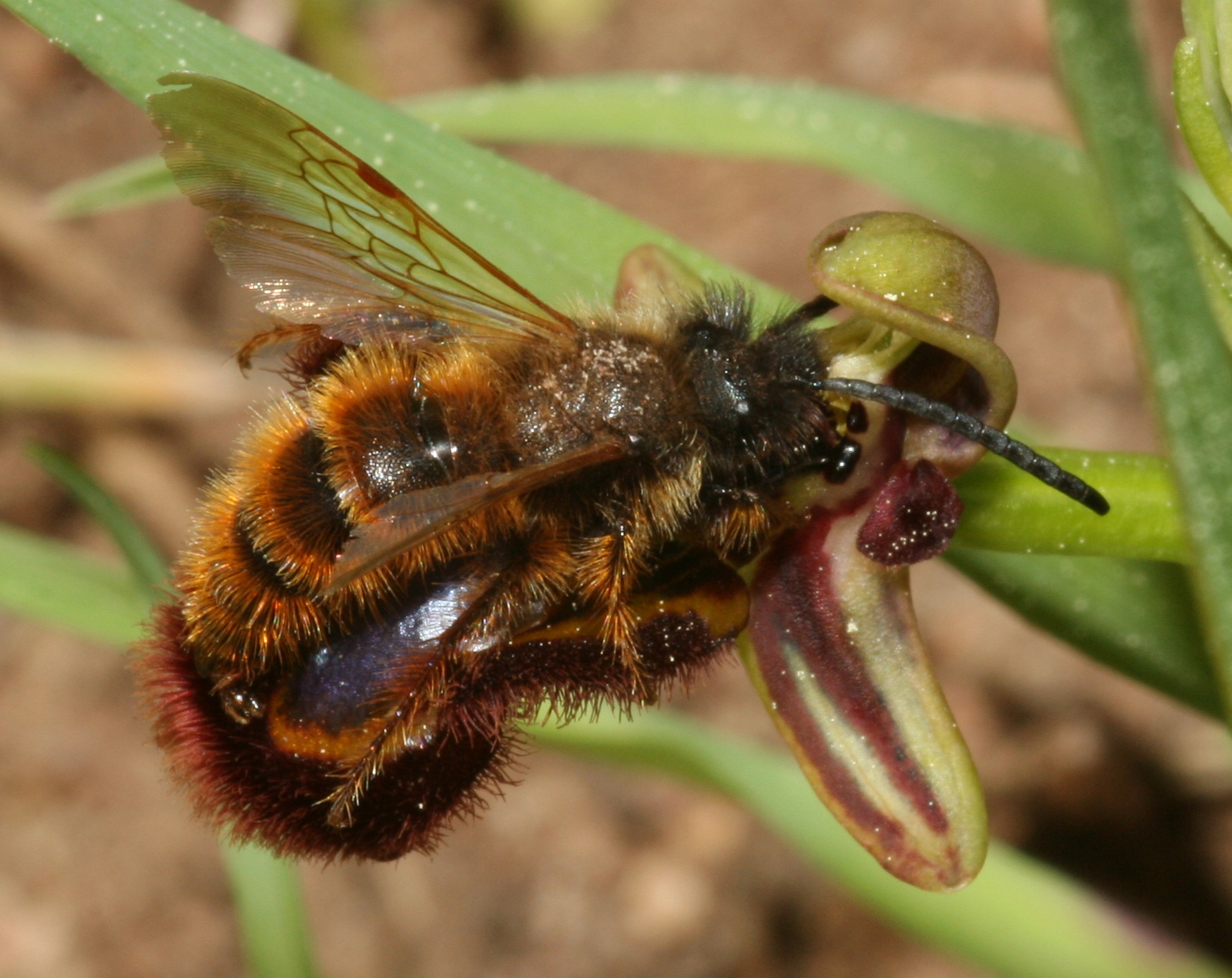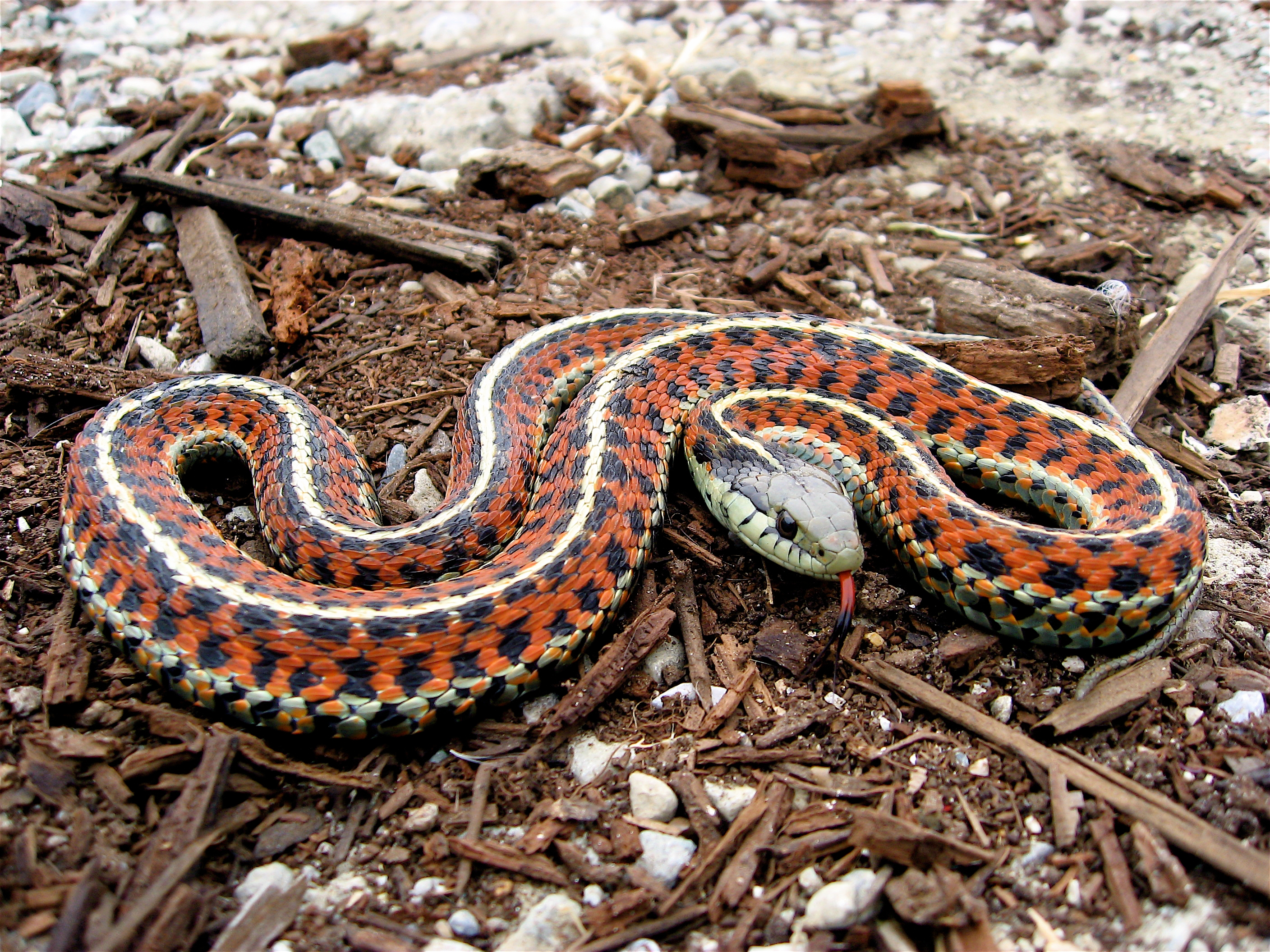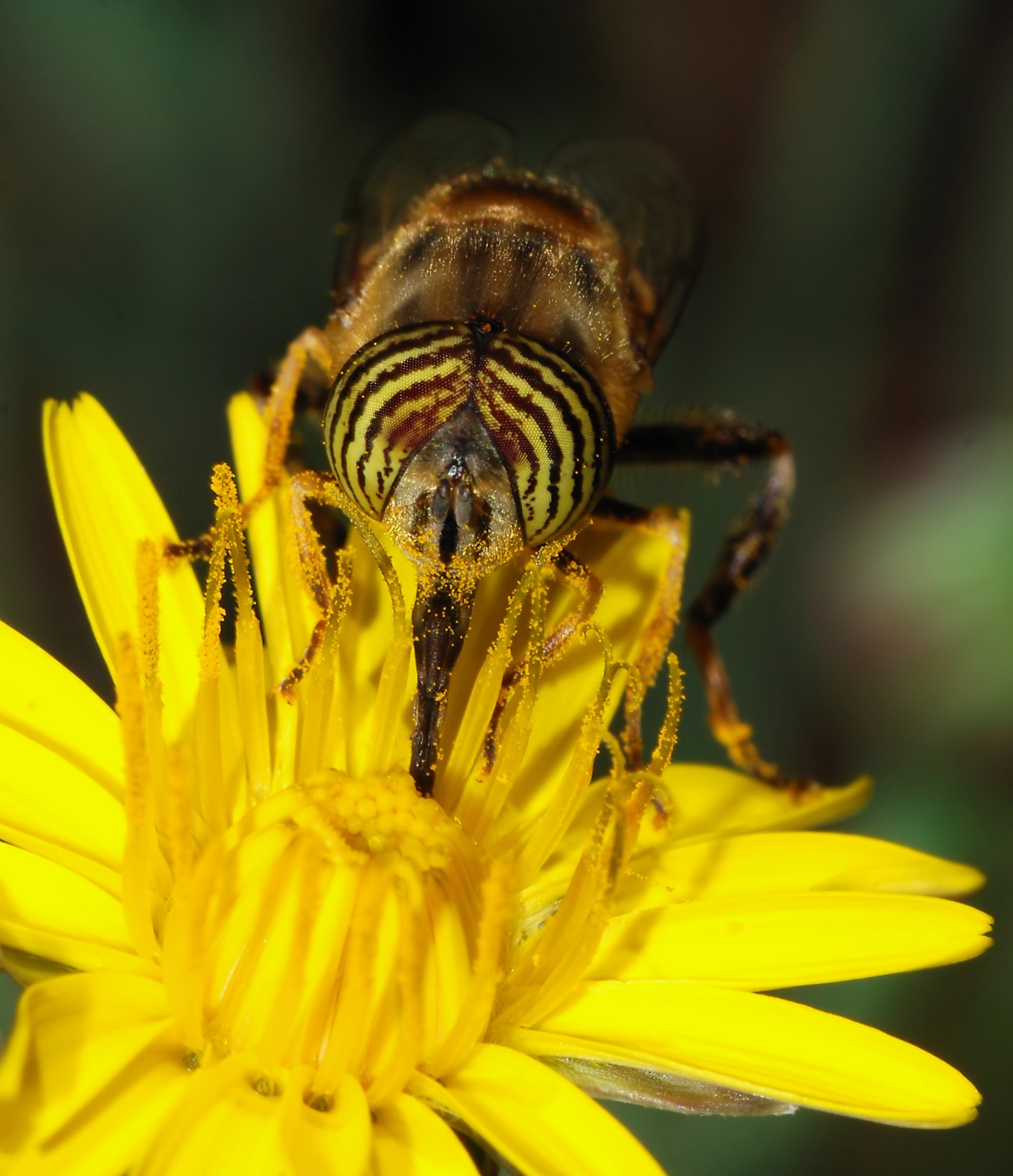|
Coevolution
In biology, coevolution occurs when two or more species reciprocally affect each other's evolution through the process of natural selection. The term sometimes is used for two traits in the same species affecting each other's evolution, as well as gene-culture coevolution. Charles Darwin mentioned evolutionary interactions between flowering plants and insects in ''On the Origin of Species'' (1859). Although he did not use the word coevolution, he suggested how plants and insects could evolve through reciprocal evolutionary changes. Naturalists in the late 1800s studied other examples of how interactions among species could result in reciprocal evolutionary change. Beginning in the 1940s, plant pathologists developed breeding programs that were examples of human-induced coevolution. Development of new crop plant varieties that were resistant to some diseases favored rapid evolution in pathogen populations to overcome those plant defenses. That, in turn, required the development of ... [...More Info...] [...Related Items...] OR: [Wikipedia] [Google] [Baidu] |
Host–parasite Coevolution
Host–parasite coevolution is a special case of coevolution, where a Host (biology), host and a parasite continually adapt to each other. This can create an evolutionary arms race between them. A more benign possibility is of an evolutionary trade-off between transmission and virulence in the parasite, as if it kills its host too quickly, the parasite will not be able to reproduce either. Another theory, the Red Queen hypothesis, proposes that since both host and parasite have to keep on evolving to keep up with each other, and since sexual reproduction continually creates new combinations of genes, parasitism favours sexual reproduction in the host. The genetic changes involved are changes in frequencies of alleles, variant forms of individual genes, within populations. These are determined by three main types of Natural selection, selection dynamics: negative frequency-dependent selection when a rare allele has a selective advantage; heterozygote advantage; and directional sel ... [...More Info...] [...Related Items...] OR: [Wikipedia] [Google] [Baidu] |
Predation
Predation is a biological interaction in which one organism, the predator, kills and eats another organism, its prey. It is one of a family of common List of feeding behaviours, feeding behaviours that includes parasitism and micropredation (which usually do not kill the Host (biology), host) and parasitoidism (which always does, eventually). It is distinct from Scavenger, scavenging on dead prey, though many predators also scavenge; it overlaps with Herbivore, herbivory, as Seed predation, seed predators and destructive frugivores are predators. Predation behavior varies significantly depending on the organism. Many predators, especially carnivores, have evolved distinct hunting strategy, hunting strategies. Pursuit predation involves the active search for and pursuit of prey, whilst ambush predation, ambush predators instead wait for prey to present an opportunity for capture, and often use stealth or aggressive mimicry. Other predators are opportunism, opportunistic or om ... [...More Info...] [...Related Items...] OR: [Wikipedia] [Google] [Baidu] |
Insect
Insects (from Latin ') are Hexapoda, hexapod invertebrates of the class (biology), class Insecta. They are the largest group within the arthropod phylum. Insects have a chitinous exoskeleton, a three-part body (Insect morphology#Head, head, Thorax (insect anatomy), thorax and abdomen (insect anatomy), abdomen), three pairs of jointed Arthropod leg, legs, compound eyes, and a pair of antenna (biology), antennae. Insects are the most diverse group of animals, with more than a million described species; they represent more than half of all animal species. The insect nervous system consists of a insect brain, brain and a ventral nerve cord. Most insects reproduce Oviparous, by laying eggs. Insects Respiratory system of insects, breathe air through a system of Spiracle (arthropods), paired openings along their sides, connected to Trachea#Invertebrates, small tubes that take air directly to the tissues. The blood therefore does not carry oxygen; it is only partly contained in ves ... [...More Info...] [...Related Items...] OR: [Wikipedia] [Google] [Baidu] |
Mutualism (biology)
Mutualism describes the ecological Biological interaction, interaction between two or more species where each species has a net benefit. Mutualism is a common type of Ecology, ecological interaction. Prominent examples are: * the nutrient exchange between vascular plants and mycorrhizal fungi, * the Fertilisation, fertilization of flowering plants by pollinators, * the ways plants use fruits and edible seeds to encourage animal aid in seed dispersal, and * the way corals become photosynthetic with the help of the microorganism zooxanthellae. Mutualism can be contrasted with interspecific competition, in which each species experiences ''reduced'' fitness, and Cheating (biology), exploitation, and with parasitism, in which one species benefits at the expense of the other. However, mutualism may evolve from interactions that began with imbalanced benefits, such as parasitism. The term ''mutualism'' was introduced by Pierre-Joseph van Beneden in his 1876 book ''Animal Parasites an ... [...More Info...] [...Related Items...] OR: [Wikipedia] [Google] [Baidu] |
Escape And Radiate Coevolution
Escape and radiate coevolution is a hypothesis proposing that a coevolutionary 'arms-race' between primary producers and their consumers contributes to the diversification of species by accelerating speciation rates. The hypothesized process involves the evolution of novel defenses in the host, allowing it to "escape" and then "radiate" into differing species. History This hypothesis originated in a 1964 paper by Paul Ehrlich and Peter Raven, "Butterflies and plants: a study in coevolution". While this paper outlined the concept, the actual term "escape and radiate" was not actually coined until 1989 by John N. Thompson. The theory has been highly influential in chemical ecology and plant evolutionary ecology, but remains controversial due to the difficulty of collecting decisive evidence as well as uncertainty about the mechanisms linking ecological 'escape' with evolutionary diversification. Theory Escape A variety of defense mechanisms can lead to ecological escape fr ... [...More Info...] [...Related Items...] OR: [Wikipedia] [Google] [Baidu] |
Mutualism (biology)
Mutualism describes the ecological Biological interaction, interaction between two or more species where each species has a net benefit. Mutualism is a common type of Ecology, ecological interaction. Prominent examples are: * the nutrient exchange between vascular plants and mycorrhizal fungi, * the Fertilisation, fertilization of flowering plants by pollinators, * the ways plants use fruits and edible seeds to encourage animal aid in seed dispersal, and * the way corals become photosynthetic with the help of the microorganism zooxanthellae. Mutualism can be contrasted with interspecific competition, in which each species experiences ''reduced'' fitness, and Cheating (biology), exploitation, and with parasitism, in which one species benefits at the expense of the other. However, mutualism may evolve from interactions that began with imbalanced benefits, such as parasitism. The term ''mutualism'' was introduced by Pierre-Joseph van Beneden in his 1876 book ''Animal Parasites an ... [...More Info...] [...Related Items...] OR: [Wikipedia] [Google] [Baidu] |
Entomophily
Entomophily or insect pollination is a form of pollination whereby pollen of plants, especially but not only of flowering plants, is distributed by insects. Flowers pollinated by insects typically advertise themselves with bright colours, sometimes with conspicuous patterns (honey guides) leading to rewards of pollen and nectar; they may also have an attractive scent which in some cases mimics insect pheromones. Insect pollinators such as bees have adaptations for their role, such as lapping or sucking mouthparts to take in nectar, and in some species also pollen baskets on their hind legs. This required the coevolution of insects and flowering plants in the development of pollination behaviour by the insects and pollination mechanisms by the flowers, benefiting both groups. Both the size and the density of a population are known to affect pollination and subsequent reproductive performance. Coevolution History The early spermatophytes (seed plants) were largely dependent ... [...More Info...] [...Related Items...] OR: [Wikipedia] [Google] [Baidu] |
Evolution
Evolution is the change in the heritable Phenotypic trait, characteristics of biological populations over successive generations. It occurs when evolutionary processes such as natural selection and genetic drift act on genetic variation, resulting in certain characteristics becoming more or less common within a population over successive generations. The process of evolution has given rise to biodiversity at every level of biological organisation. The scientific theory of evolution by natural selection was conceived independently by two British naturalists, Charles Darwin and Alfred Russel Wallace, in the mid-19th century as an explanation for why organisms are adapted to their physical and biological environments. The theory was first set out in detail in Darwin's book ''On the Origin of Species''. Evolution by natural selection is established by observable facts about living organisms: (1) more offspring are often produced than can possibly survive; (2) phenotypic variatio ... [...More Info...] [...Related Items...] OR: [Wikipedia] [Google] [Baidu] |
Evolutionary Arms Race
In evolutionary biology, an evolutionary arms race is an ongoing struggle between competing sets of co-evolving genes, phenotypic and behavioral traits that develop escalating adaptations and counter-adaptations against each other, resembling the geopolitical concept of an arms race. These are often described as examples of positive feedback.Dawkins, R. 1996. ''The Blind Watchmaker'' New York: W. W. Norton. Note: This book was also published by Penguin in 1991. While the text is identical, page numbers differ The co-evolving gene sets may be in different species, as in an evolutionary arms race between a predator species and its prey (Vermeij, 1987), or a parasite and its host. Alternatively, the arms race may be between members of the same species, as in the manipulation/sales resistance model of communication (Dawkins & Krebs, 1979) or as in runaway evolution or Red Queen effects. One example of an evolutionary arms race is in sexual conflict between the sexes, often describe ... [...More Info...] [...Related Items...] OR: [Wikipedia] [Google] [Baidu] |
Pollinator
A pollinator is an animal that moves pollen from the male anther of a flower to the female carpel, stigma of a flower. This helps to bring about fertilization of the ovules in the flower by the male gametes from the pollen grains. Insects are the major pollinators of most plants, and insect pollinators include all families of bees and most families of Aculeata, aculeate wasps; ants; many families of flies; many lepidopterans (both butterflies and moths); and many families of beetles. Vertebrates, mainly bats and birds, but also some non-bat mammals (monkeys, lemurs, Phalangeriformes, possums, rodents) and some lizards pollinate certain plants. Among the pollinating birds are hummingbirds, honeyeaters and sunbirds with long beaks; they pollinate a number of deep-throated flowers. Humans may also carry out artificial pollination. A pollinator is different from a pollenizer, a plant that is a source of pollen for the pollination process. Background Plants fall into pollination s ... [...More Info...] [...Related Items...] OR: [Wikipedia] [Google] [Baidu] |
University Of Chicago Press
The University of Chicago Press is the university press of the University of Chicago, a Private university, private research university in Chicago, Illinois. It is the largest and one of the oldest university presses in the United States. It publishes a wide range of academic titles, including ''The Chicago Manual of Style'', numerous academic journals, and advanced monographs in the academic fields. The press is located just south of the Midway Plaisance on the University of Chicago campus. One of its quasi-independent projects is the BiblioVault, a digital repository for scholarly books. History The University of Chicago Press was founded in 1890, making it one of the oldest continuously operating university presses in the United States. Its first published book was Robert F. Harper's ''Assyrian and Babylonian Letters Belonging to the Kouyunjik Collections of the British Museum''. The book sold five copies during its first two years, but by 1900, the University of Chicago Pr ... [...More Info...] [...Related Items...] OR: [Wikipedia] [Google] [Baidu] |
Fertilisation Of Orchids
''Fertilisation of Orchids'' is a book by English naturalist Charles Darwin published on 15 May 1862 under the full explanatory title ''On the Various Contrivances by Which British and Foreign Orchids Are Fertilised by Insects, and On the Good Effects of Intercrossing''. – Bibliographical introduction from: Freeman, R. B. (1977) ''The Works of Charles Darwin: An Annotated Bibliographical Handlist''. 2nd edn. Dawson: Folkestone. Darwin's previous book, ''On the Origin of Species'', had briefly mentioned evolutionary interactions between insects and the plants they fertilised, and this new idea was explored in detail. Field studies and practical scientific investigations that were initially a recreation for Darwin—a relief from the drudgery of writing—developed into enjoyable and challenging experiments. Aided in his work by his family, friends, and a wide circle of correspondents across Britain and worldwide, Darwin tapped into the contemporary vogue for growing exotic ... [...More Info...] [...Related Items...] OR: [Wikipedia] [Google] [Baidu] |











